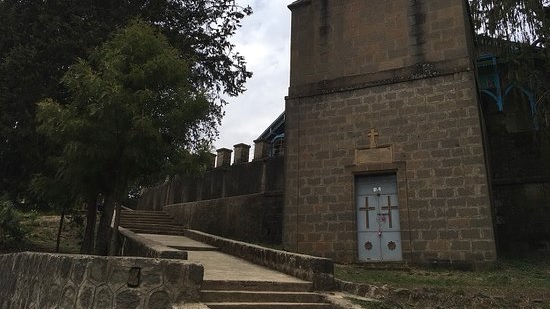
ADDIS ABABA (ENA)–Ethiopia is aspiring to make Addis Ababa’s Menelik Palace, which was built 100 years ago by Emperor Menelik II who reined from 1889 to his death in 1913, a tourist site.
The Menelik Palace is a palatial compound, which contains several residences, halls, chapels, and working buildings.
Emperor Menelik II is known for his territorial expansion and creation of the modern Ethiopia, which he completed by 1898.
Emperor Menelik was also remembered for leading Ethiopian troops against the forces of fascist Italy in the First Italo-Ethiopian War, where Ethiopia scored a decisive victory at the Battle of Adwa.
During the rule of Mengistu Haile Mariam, the palace grounds were used as a prison to house many notables of the imperial government including Emperor Haile Selassie I, who was Ethiopia’s emperor from 1930 to 1974.
Mengistu Haile Mariam, who was the chairman of the Derg and the Communist leader of Ethiopia from 1977 to 1991, built his office within the compound. The office is serving as the seat of the Prime Minister of Ethiopia.
Prime Minister Abiy Ahmed believes that opening the site will help to display the history of Ethiopia, as the Palace is the place where Menelik II was using as a seat to rule the country.
Abiy said, “We have an ample resources which has been closed for years in this office. We can show the greatness of Ethiopia without traveling to Axum, Lalibela and others”.
The old palace, aged more than 100 years, are marvelous heritages that display the level of art and design that Ethiopians had reached at the time, he added.
Emperor Haile Selassie I used the compound to preside over judicial issues.
“So the Ministry of Culture and Tourism needs to discuss with respective regional state culture and tourism bureaus and we will provide mini places for respective regions to be represented here”, he affirmed.
“So it will create an opportunity for students and the youth to know who is Menelik, Haile Selassie, Mengistu, Meles and what Ethiopia look like within half a-day,” Abiy noted.
Apart from promoting the history of Ethiopia, making the site a tourist destination will help to improve knowledge of the new generation about the country’s history and generate income.
Source: ENA
